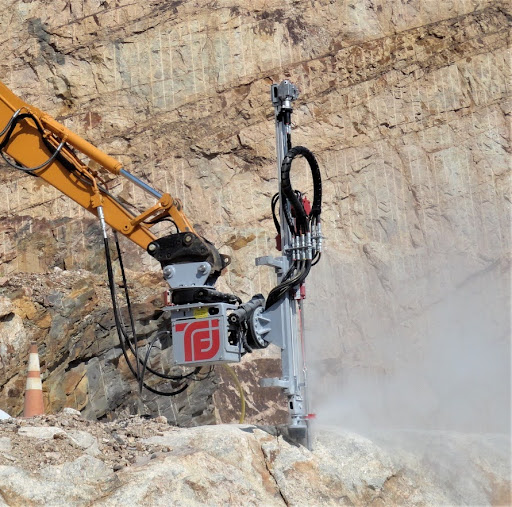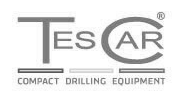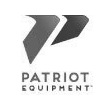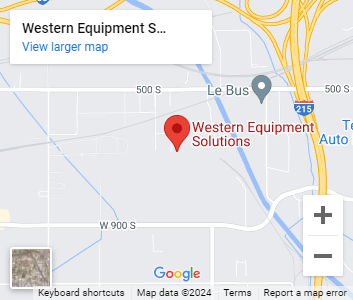Rock drills are essential for creating the foundations of our architecture, but their powerful operation comes with some risks. Whether you’re a seasoned professional or new to the field, understanding the safety protocols of rock drilling is very important for job safety.
This blog will navigate the dangers of working with rock drills and provide step-by-step insights into the pre-operation and operational safety practices everyone should use.
We’ll also equip you with tips and strategies to mitigate risks, ensuring that every job progresses smoothly and everyone’s well-being is a priority. Job safety should always matter above all else.
Join us as we bore into the details of rock drill safety, ensuring you are fully prepared to tackle your next drilling task with confidence and care.
UNDERSTANDING ROCK DRILLS
Rock drills work with percussive and rotary action. The drill bit is pressed against the rock surface, and a combination of hammering and rotational movements breaks the rock into small pieces and drives the drill bit further into the surface, creating a hole.
The debris is usually removed from the hole by blowing air or water through the drill pipe. This is done so that the drilling action doesn’t need to stop to remove the debris.
Types Of Rock Drills
There are three primary types of rock drills: pneumatic, hydraulic, and electric.
- Pneumatic rock drills: Compressed air powers these rock drills that are commonly used for mining and quarrying.
- Hydraulic rock drills: These use hydraulic energy to operate; they’re known for their high power-to-weight ratio, efficiency, and reduced noise levels.
- Electric rock drills: Electricity powers these drills that are used for underground mining where air quality is a concern.


POTENTIAL HAZARDS
Using rock drills involves some hazards, which highlights the importance of stringent safety measures, proper training, and personal protective equipment. Here are some of the primary hazards associated with rock drilling and what you can do to stay safe on the job:
Noise-Induced Hearing Loss
Rock drills generate high noise levels; please always use hearing protection.
Respirable Dust And Silica Exposure
Drilling into rock produces dust, which often contains crystalline silica. Use dust suppression systems to increase safety.
Flying Debris And Shrapnel
The drilling process might project small pieces of rock or metal fragments, making safety glass a necessity on the job site.
Equipment Malfunction And Breakage
Not properly using or maintaining equipment can cause the equipment to malfunction, which can cause serious injury. Be sure to always properly inspect and service equipment before using it.
Electrical Hazards
Electrically powered rock drills pose electrocution risks. Inspect all your cords and generators.
Physical Hazards
Being struck by or caught in the machinery can be fatal. Always wear the proper safety clothing to minimize risk.
High-Pressure Lines
For hydraulic rock drills, there’s the danger associated with high-pressure lines, which can lead to oil injection injuries or line bursts. It’s important to regularly inspect and properly maintain hydraulic lines.
PRE-OPERATION SAFETY
Before operating a rock drill, workers should follow a series of pre-operation safety steps to ensure everyone’s safety and the efficient use of equipment. These steps are crucial in minimizing risks associated with rock drilling operations:
Safety Training And Briefing
Ensure all operators are trained to use rock drills and understand the specific risks associated with their operation. Conduct a safety briefing before the start of each shift to review safety measures and discuss any potential hazards.


PERSONAL PROTECTIVE EQUIPMENT
Ensure all workers have the necessary PPE, including safety glasses, hearing protection, dust masks or respirators, heavy-duty gloves, steel-toed boots, and hard hats. Inspect PPE for damage and proper fit before use.
Equipment Inspection
Check the rock drill for any signs of wear or damage. Inspect drill bits for sharpness and integrity. Check for loose, damaged, or missing parts, and ensure all controls and brakes function correctly. Verify that all safety guards and devices are in place and are operational.
Work Area Preparation
Clear the area of any debris or tripping hazards. Ensure the drilling area is stable and adequately supported where necessary. Mark the drilling area clearly, and set up barriers to keep unauthorized personnel out.
Operational Check
If possible, perform a dry run to check the operation of the drill without actual drilling. Verify that the feed pressure, rotation, and percussion are working as expected. Check the effectiveness of your dust suppression systems and make any necessary adjustments.
Environmental Considerations
Assess weather conditions and plan for environmental factors that could impact safety, such as rain, wind, or extreme temperatures. Ensure adequate lighting if working in dimly lit conditions.
Emergency Procedures
Review emergency procedures, including the locations of first aid kits, eyewash stations, and alarms. Ensure all workers know the location of the nearest emergency exit or safe assembly point.
OPERATIONAL SAFETY
During the operation of rock drills, adhering to safety best practices is critical to prevent accidents and ensure the well-being of workers. Here are the essential operational safety steps for rock drill operators:
Operating Technique
Maintain a stable stance and proper hand placement on the rock drill to control it effectively and reduce the risk of strain. Avoid overreaching or placing yourself in an awkward position that could lead to loss of balance or control.
Equipment Handling
Operate the rock drill according to the manufacturer’s instructions and within the recommended operating parameters. Use the correct drill bits that are required for the ground conditions. Start the drill gently to prevent kickback and allow the bit to progress steadily into the material.
Dust And Debris Control
Suppress dust using options like water sprays or dust extraction systems to minimize airborne particles. Stop the drill periodically to clear away debris that could become hazardous.
Handling Drill Steel And Bits
Be cautious when changing drill steels or bits to avoid pinch points and sharp edges.
Ensure the power is off or the equipment is disconnected when performing bit changes or maintenance.
COMPLIANCE AND CERTIFICATION THROUGH OSHA, NCCCO, AND ADSC
Adhere to all site-specific safety rules and the operational protocols established by OSHA, the National Commission for the Certification of Crane Operators (NCCCO), and the ADSC Drill Rig Operator School (DROS).
NCCCO’s primary goal is to develop effective performance standards for safe crane operations to reduce the risk of accidents and injuries and enhance safety in lifting operations everywhere.
NCCCO offers certification programs for a variety of crane-related operations. These certifications are recognized by OSHA and the American Society of Mechanical Engineers for crane operator competency.
Becoming certified through NCCCO is recognized in the rock drill industry for safety, regulatory compliance, professional development, and skill verification. It also assists with insurance and liability.
ADSC stands as a leading organization within the foundation drilling industry. Its primary focus is on the geotechnical and foundation engineering fields, including anchored earth retention, drilled shafts, micropiles, and other deep foundation elements.
The ADSC offers Drill Rig Operator School (DROS) and AMPIS to educate and certify drill rig operators in the foundation drilling industry. DROS offers a comprehensive curriculum, hands-on training, and experienced instructors. DROS emphasizes safety and following industry standards.
As you can see, between OSHA, NCCCO, and the ADSC’s DROS and AMPIS, there are plenty of educational opportunities to help keep you safe on the job.
In an effort to maintain job safety, report any unsafe conditions or practices that are not in line with OSHA, NCCCO, or the ADSC to supervisors promptly.
So, there you have it.
Now you understand how to work so that you and your crew are able to get the job done without compromising anyone’s safety or well-being. By following these tips and guidelines for rock drill safety, you’ll be well on your way to completing your projects safely.
STAY SAFE WITH WESTERN EQUIPMENT SOLUTIONS
The more you understand how critical safety measures are for job safety, the clearer it becomes that you need the right equipment and the right education.
Western Equipment Solutions offers both. We help certify drill rig operators with the NCCCO Drill Rig Operator Program’s technical program and fully support ADSC’s Drill Rig Operator School and AMPIS.
At Western Equipment Solutions, we also understand that the foundation of a safe work environment is built on the reliability and quality of your equipment.
We’re committed to providing top-tier rock drilling equipment that meets the highest safety and efficiency standards. Our selection is curated to bring you the very best in the industry, ensuring that every piece of equipment is engineered with your safety in mind.
Take, for example, the TEI Rock Drills casing handler, which grabs the drill rod and casing, and positions it to connect to the micropile drills outputs without risking the operator’s hands getting caught in pinch points.
Simply put, don’t compromise on safety or performance. We invite you to explore our range of rock drilling solutions and find the perfect fit for your project’s needs. With Western Equipment Solutions, you’re not just purchasing equipment; you’re investing in a partnership that prioritizes the safety and success of your operations.













